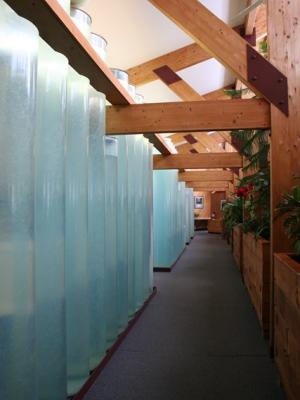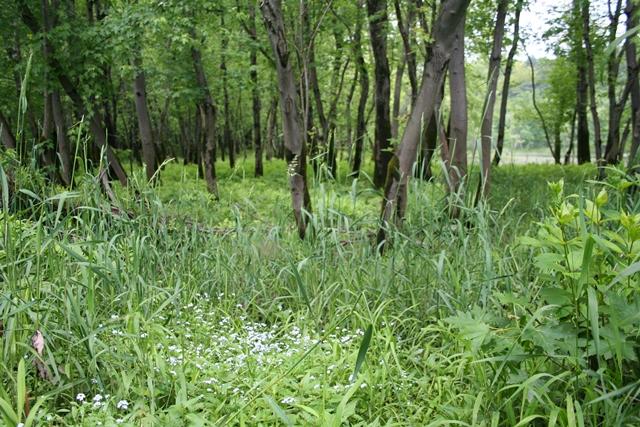- Tags:
- Conservation Center,
- Recreation,
- Education
The Forest Society offers guided and self-guided tours of the Conservation Center building and the adjacent Merrimack River Outdoor Education and Conservation Area ("The Floodplain.") Excellent for summer camps, schools, or family fun!
The Forest Society is offering guided, as well as self-guided, tours of its Conservation Center headquarters in Concord and guided tours of the adjacent 103-acre Merrimack River Outdoor Education & Conservation Area ("The Floodplain.") These tours, great for summer camps, schools, church and civics groups and families, are led by trained volunteers and rangers during the summer months and can be led by Conservation Center Property Manager Jason Teaster when more technical tours are needed.
The Forest Society started building the Conservation Center in 1980 to demonstrate the use of renewable natural resources. After expanding with the addition of the Weeks Wing (1990) and the French Wing (2001), the Conservation Center now exists as an example of the evolution of energy-conscious designs. The Conservation Center has won many awards over the years and was most recently awarded the 25-Year Award for Excellence in Architecture from the AIANH for its design by acclaimed architect C. Stuart White.
Just this past week, I was able to shadow, and then lead, two groups of middle-school aged children in fun and informational tours of the Conservation Center, each lasting just under one-hour. I led a group of 20 campers from the Audobon Society of N.H. Students asked a series of questions that underlined some of the Forest Society's deeper meanings like, "Why is everything made out of wood?" These questions led to brief discussions on topics such as sustainable forestry. Trees from the Conservation Center property were used for the timber frame, and the majority of the visible wood used for the building was harvested in New Hampshire.
We walked through the main workspace, and the campers instantly became enchanted by the water tubes, a unique heat control system that also functions as art. These water tubes, each holding 132 gallons of water, line the hallway and capture the sun's energy during the winter months. They also produce a cooling effect during the summer months when the sun is too high overhead to reach them. As we passed through the Weeks Wing, we stopped to pay homage at the bust sculpture of John Wingate Weeks, champion of "The Weeks Act," which created the National Forest system and forever protected the White Mountain National Forest -- at the urging of the Forest Society's founders.

We finished the tour on the deck. The sun was shining, following a morning rain, and I was able to show the kids the solar panels that line our south-facing rooftop. Just as I was about to leave, I felt a tugging at my arm. Turning around, a boy looked at me and said, "You guys have 437 windows, I counted." I had asked them at the beginning of the tour how many windows were in the building (windows cover more than 1,500 square feet of wall space), but I didn't think anyone would really keep track. I was amazed at his ability to keep count.

Down the hill from the Conservation Center, the Merrimack River Outdoor Education and Conservation Area, a 103-acre Forest Society reservation, offers great ecological and cultural educational opportunities. The Sediment/River Terrace Forest offers a habitat to 10 major plant communities along with interesting wildlife and tree species. Walking along the Les Clark Nature Trail to the river, visitors will pass a pine forest planted in the 1960s, a wooded swamp and beaver-influenced wetland, and a native silver maple floodplain forest. Visitors may also catch a glimpse of turtles, beaver, migratory waterfowl and other birds such as the cardinal, oriole, and bald eagle. This guided tour can be directed towards any theme, from biological diversity to natural history, to wildlife to why it's so important to conserve land.

To schedule a guided tour for either the building or the floodplain, please call our front desk at 603-224-9945. If you would like to take a self-guided audio tour, please visit our building Monday through Friday (excluding holidays), 9 a.m. to 4:30 p.m.
If you are looking for another family-friendly activity, consider taking our Forest Reservation Challenge!
